| |
|
| |
|
| |
|
|
|
|
|
|
| |
 |
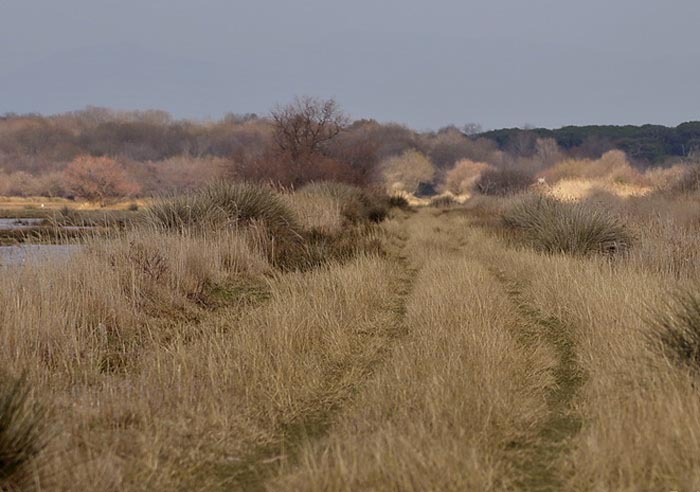 |
| I T |
Parco Costiero della Sterpaia |
|
 |
 |
| |
|
|
|
| |
|
Parco Costiero della Sterpaia
|
|
|
|
| |
|
More than 20% of the territory of the Costa degli Etruschi consists of natural parks and reserves. By the sea the natural park of Bolgheri, a splendid marshy area of international importance, houses thousands of aquatic birds, it was the very first sanctuary for fauna in Italy. Close to Piombino, flamingos, ibis, storks and herons gather at Orti-Bottigone natural park which is characterised by salty and freshwater marshlands. On the outskirts of San Vincenzo the natural park of Rimigliano, a flourishing flora and fauna oasis, opens onto one of the most beautiful beaches of the Costa degli Etruschi.
In the area of Piombino the natural park Parco Costiero della Sterpaia, a stretch of damp forest behind the shore, displays a natural landscape typical of the Maremma region. The Park stretches along the Livornese Tyrrhenian coast, in the wide gulf between Piombino and Follonica. It occupies an area of about 296 hectares of the territory of the municipal district of Piombino, and is made up of 17 hectares of beach along 10 Km of coast, 124 hectares of dunes and dune hinterland and 155 hectares of woodland and areas deforested for cultivation.
The Coastal Park of Sterpaia protects coastal dune, bag, and grassland habitats, macchia-juniper thickets, and pine woodlands. Even the rare Mediterranean fan palms can be tound within the park, near the northernmost edge of their range.
The park also includes the beach and coastal strip of the gulf between Piombino and Follonica, to almost all of which the public has free access.
The beaches are of fine, light sand, and form a slightly curved coastline which slopes gently to the sea. Behind the beach lies a narrow strip of dunes colonised by tenacious, pioneering vegetation, adapted to the arid, salty, shifting, wind-swept soils and bent and twisted by the incessant sea breezes. In winter, Sterpaia is an excellent place to take advantage of the clear, sunny days, as the beaches are empty.
The Sterpaia Coastal Park includes a large Coastal Public Parking system, from Perelli to Torre Mozza areas. The Public Parking nearest to the Sterpaia Wood is in Carlappiano area.
Map | pdf
|
|
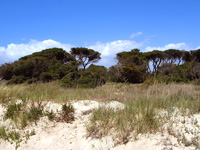
|
| |
|
|
|
| |
|
|
Walking in Tuscany | Itinerary in the Coastal Park of Sterpaia
|
|
Distance 5 km |
Loop trail through a variety of coastal habitats including beach, dunes, pine woodlands, and an old-growth ash forest. Distance: 4.91 km.
From the the parking area, the route begins on the dirt path heading in land from the canal and coast to the Bosco della Sterpaia.
After about 400 meters, the route meets a closed gate on the right and a road heading left. Go past the gate, and follow the path along the fenced Bosco della Sterpaia. Two interpretive signs outside the fence provide information about the ecosystems of the park. The route them emerges from the woods at a field, and there is an access gate for the ash forest. If you have obtained th'e keys for the gate from the park office, you can take a walk along the 1 kilometer loop.
Bosco della Sterpaia. This is an oldgrowth ash forest, unique in the region. These types of woodlands were far more common in the past, but draining of the wetlands and deforestation for agriculture have now left them fragmented and rare. Throughout the stand, there are some truly massive ash and deciduous oak trees. The area is protected, and access is available only through reservations.
To access the old-growth ash forest of Bosco della Sterpaia, there are two options: You can take a guided tour on Saturdays, Sundays, and Wednesdays at 15:00 (3 PM) and 16:30 (4:30 PM), or take a solo tour with reservations in advance. For reservations and more information, call the park office at +39/348/888/3165.
About 200 meters after the gate, there will be two parallel roads headed toward the sea. You can choose between the first, which is lined with tall trees, or the second, which goes through the open field. Once you reach the canal, cross the bridge and enter the coastal pine forest. After about 130 meters, turn left at the sign for A 13, or in order to see the maximum variety of ecosystems in the park, wait until the last access point (A22) to head to the sea. From here it is 1,8 kilometers back along the beach to the A4 access point, which will lead you back to the parking area. All along the beach, there are dunes, covered in wildflowers in the spring.
To explore more of Sterpaia reserve, there are other hiking routes north of the canal, which provide an additional 3 kilometers (additional walk along Fosso Corniaccia, marked green on the map). |
|
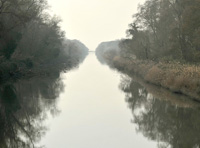
Fosso Corniaccia |
|
|
|
Walking in Tuscany | From Torre Mozza to the Coastal Park of Sterpaia
|
|
Distance 2,8 km |
The landscape of the Gulf between Piombino and Follonica is characterized by the presence of various towers, whose presence has specific historical reasons. The oldest is the Torre Mozza, erected in the first half of the 6th Century as a lookout post against the Saracen raids which for centuries infested the Tuscan coastline. A similar function was covered by the Torre del Sale, built in the 9th Century – to ward off the threat posed by the Moors. The third tower which stands out on the horizon, also from the 9th Century, is known as Carbonifera. |
|
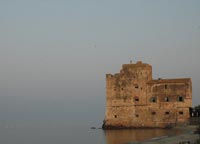 Torre Mozza Torre Mozza
|
|
|
|
| |
|
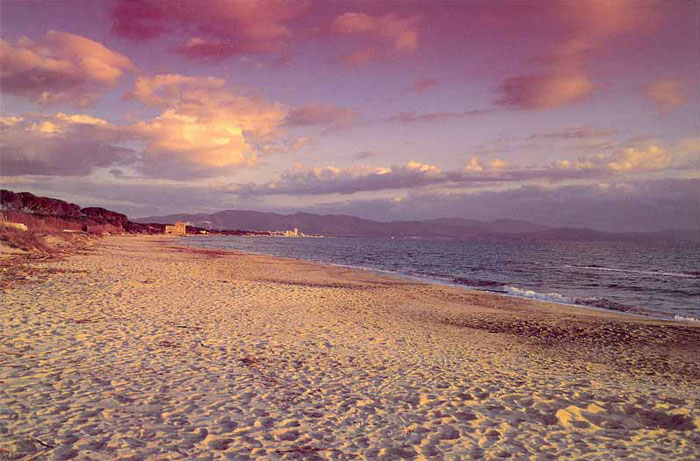 |
Beach of the Parco Costiero della Sterpaia
|
| |
I Parchi della Val di Cornia | The Coastal Park of Sterpaia
The Parks of the Val di Cornia, in Tuscany, tell a thousand-year-old story which begins with the Etruscan people and bears witness to centuries of extraction and working on metals, proposing also splendid natural, coastal and hilly environments. The system includes 2 Archaeological Parks, Natural Parks, 1 Museum, 1 Documentation Centre, included in the area of the five municipalities at the extreme south of the province of Livorno, opposite the Island of Elba.
How to get there
To get to Parco Costiero della Sterpaia, take the SS1 between Pisa and Follonica. Just south of Piombino, leave the SS1 and take the Vignale-Riotorto exit. After exiting the SS 1, look for brown signs for Parco della Sterpaia, and follow the road. Continue until you see a brown sign pointing left for the Bosco della Sterpaia and Carlappiano. Follow th is road to the end at the beach area. There will be a large parking area on the left. Directly next to the large parking lot, take a left onto the dirt road that heads toward the woods, and park at the smaller lot at the end.
It is also possibie to reach Sterpaia by bus from the train station at Campiglia Marittima.
Walking in Tuscany | Walking through nature reserves and beaches in the Maremma, in southern Tuscany
|
Images | Dalla Sterpaia a Bocca d'Arno
Source photo beach | www.parchivaldicornia.it |
|
|
| |
|

Hidden secrets in Tuscany Tuscan farmhouses | Podere Santa Pia
|
| |
|
|
|
|
|
|
|
|
|
Podere Santa Pia |
|
Podere Santa Pia |
|
Madonna di Vitaleta Chapel, San Quirico d'Orcia
|
| |
|
|
|
|
|
|
|
|
|
Parco Naturale di Sterpaia |
|
|
|
Fosso Corniaccia
|
|
|
|
|
|
Vetulonia |
|
Diaccia Botrona, Casa Rossa Ximenes
|
|
Principina a Mare
The Ombrone River located along the coast of Maremma Grossetana, where it flows into the Tyrrhenian Sea in Principina a Mare.
|
The Maremma is outstanding for its many protected natural areas that offer the chance to appreciate its wide variety of animals, insects and birds, trees, shrubs and flowers and to enjoy its special light and scenic beauty.The Nature Reserves aren't separate from the rest of the territory, but are symbolic of an integral whole. The Maremma affirms a way of life in harmony with nature and the rhythm of the seasons.
Vetulonia was Etruscan city, inhabited even in Roman times and location of a medieval castle, is located within the municipality of Castiglione della Pescaia. At the center of an important mineral area, Vetulonia was once a rich and powerfull etruscan city as one can guess from the imposing tombs of its necropolises and from it's rediscovered precious goldsmith. The visit of it's urban excavations, of the archeological museum and the necropolis will give us a better understanding of the the art, the craftmanship and funeral practices of the etruscans.
The excavations of the city and the necropolis of Vetulonia are accessible throughout the days. The Museum, recently restored, is within the country in Piazza Vetluna.
Diaccia Botrona Marshland is the last relic of a once large Etruscan and Roman lake - lago Prile - that lay between Grosseto and Castiglione della Pescaia. Long coastal dunes, the tombolo separate the marshland from the Tyrrhenian Sea.
The most beautiful beaches of Tuscany | [1] From Principina a Mare and Castiglione della Pescaia to Cala Violina and Piombino
|
|
|
| |
|
|
|
| |
|
|
|
| |
|
|
|
| |
|
|
|
| |
|
|
|
| |
|
|
|
|
|
|

